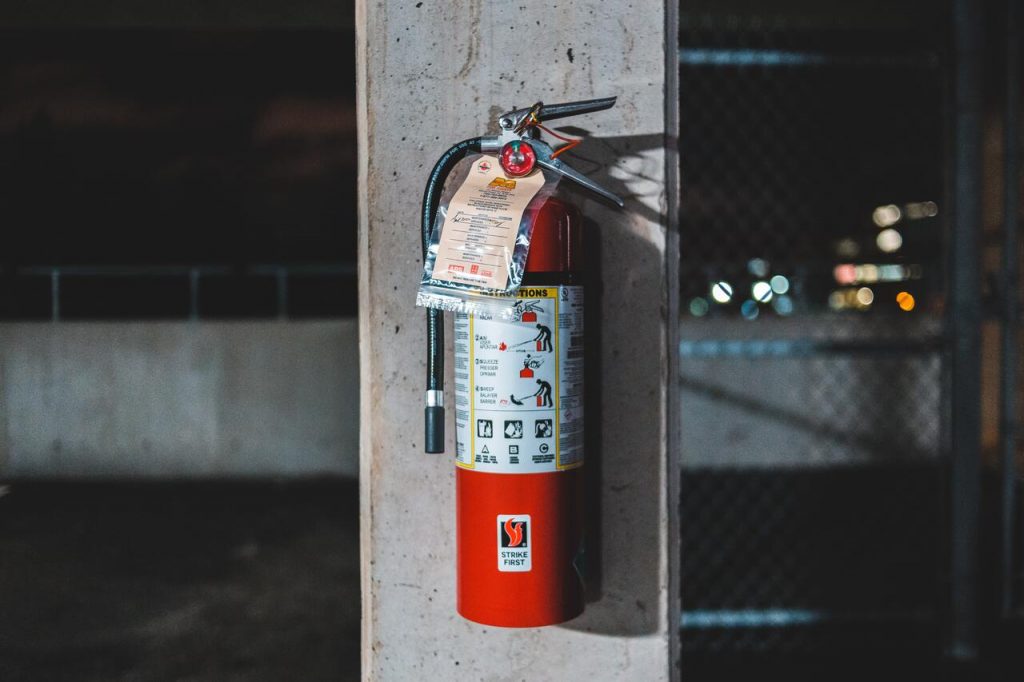
Fire-related accidents take millions of lives worldwide every year. While some fires are more difficult to prevent than others, different businesses have high responsibility in making sure that their buildings, whether commercial or for residential purposes, are as protected as possible. There are 7 key layers to fire safety that businesses should consider: prevention, detection, early suppression, evacuation, compartmentation and firefighting.
Not only are they expected to follow the strict fire safety regulations and standards but also to go above and beyond by taking advantage of the latest fire prevention technology available. The fire systems specialists work hard to design new and innovative ways to protect buildings of all types and sizes. Let’s have a look at some of the smartest fire protection products available.
Fire pipes
Sufficient fire protection piping is one of the most important components in any building’s fire protection system. Pipes play a key role in the event of a fire accident – they are responsible for distributing different types of fire extinguishing fluid, including water, foam solution or gas. Therefore, ensuring that the fire piping system in the building works efficiently and follows all regulatory standards is of paramount importance.
Traditionally, fire protection pipes will be made out of metal, carbon steel and copper. However, where allowed by regulations, non-metallic pipes (CPVC or Polypropylene) are also possible to install.
Fire hydrants
Fire hydrants are another commonly seen fire protection tool, which essentially allows for easy access to water supply or other types of fire extinguishing fluid in case of a fire. They can either be visible or placed underground, but they will always be located in a strategic position for the easiest access if needed. While mostly seen in public areas of the city, fire hydrants are highly recommended for businesses too.
The latest innovative development of fire hydrants is the availability of dry barrel hydrants. These types of hydrants solve the commonly experienced freezing problems, which puts many businesses off of installing one. This is done by having a control valve located between the bottom of the barrel and the footpiece, which allows the hydrant body to be empty, avoiding damage or breakage.
Fire tanks
Fire tanks are essentially containers that store water, providing it to the fire pump in the case of a fire-related accident. There are different types of fire tanks available, including various sizes, shapes and materials. The latest technology of fire tanks allows it to adapt to the many needs of businesses, such as no need for any specialist maintenance, no need for painting, easy and quick assembly, innovative solutions to avoid leaks, etc., all minimising the costs for businesses. Not only that, the latest fire tank solutions are available in environmentally-conscious materials, so buildings can help prevent both fire hazards and global warming.
Intumescent paint
While the above are well-known active fire protection methods, there are also innovative passive fire protection tools that can contribute towards the overall effectiveness of the fire protection systems in the building. Intumescent paint is one of the many types of passive fire protection.
The way this works is essentially the key parts of the building are coated in the intumescent paint solution, which in the event of a fire will react to the heat and start swelling up to a much more thick consistency. This is a highly controlled process that produces carbonaceous char and acts as a layer of insulation to prevent the fire from expanding too much as well as provides extra time for the fire fighters. The intumescent paint is recommended to be used in addition to already fire resistant walls, ceilings and floors.
Smoke seals
Smoke seals are another passive fire protection method that can be a huge help in the event of a fire accident. A smoke seal can be either in the form of a brush, a nylon pile or a rubber strip. It is placed around the door or the door frame, that way stopping the toxic smoke from the fire from passing through the gaps of the doors. This is essential in terms of creating extra time to evacuate any people in the building before poisoning from the toxic smoke occurs. In fact, the extra time can be quite significant, with some smoke seals resisting the fire smoke for 30 to 60 minutes.
Smoke detectors
Smoke detectors are a key element of the fire protection systems in any building, as they detect and report a fire hazard before the fire gets to escallate, at its beginning stages. The technology of smoke detectors is getting increasingly smarter, with new detectors offering an increased level of sensitivity as well as availability to detect new types of smoke.
Some new detectors are able to recognise flames visually using a live video technology that recognises characteristics specific to fire smoke. Other available detectors will do regular air sampling, this way constantly checking the quality of the air in the building and recognising any signs of fire smoke.


